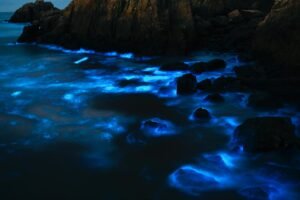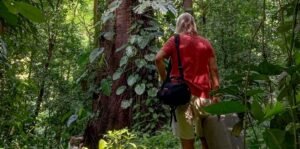Costa Rica’s Phallus Mushrooms
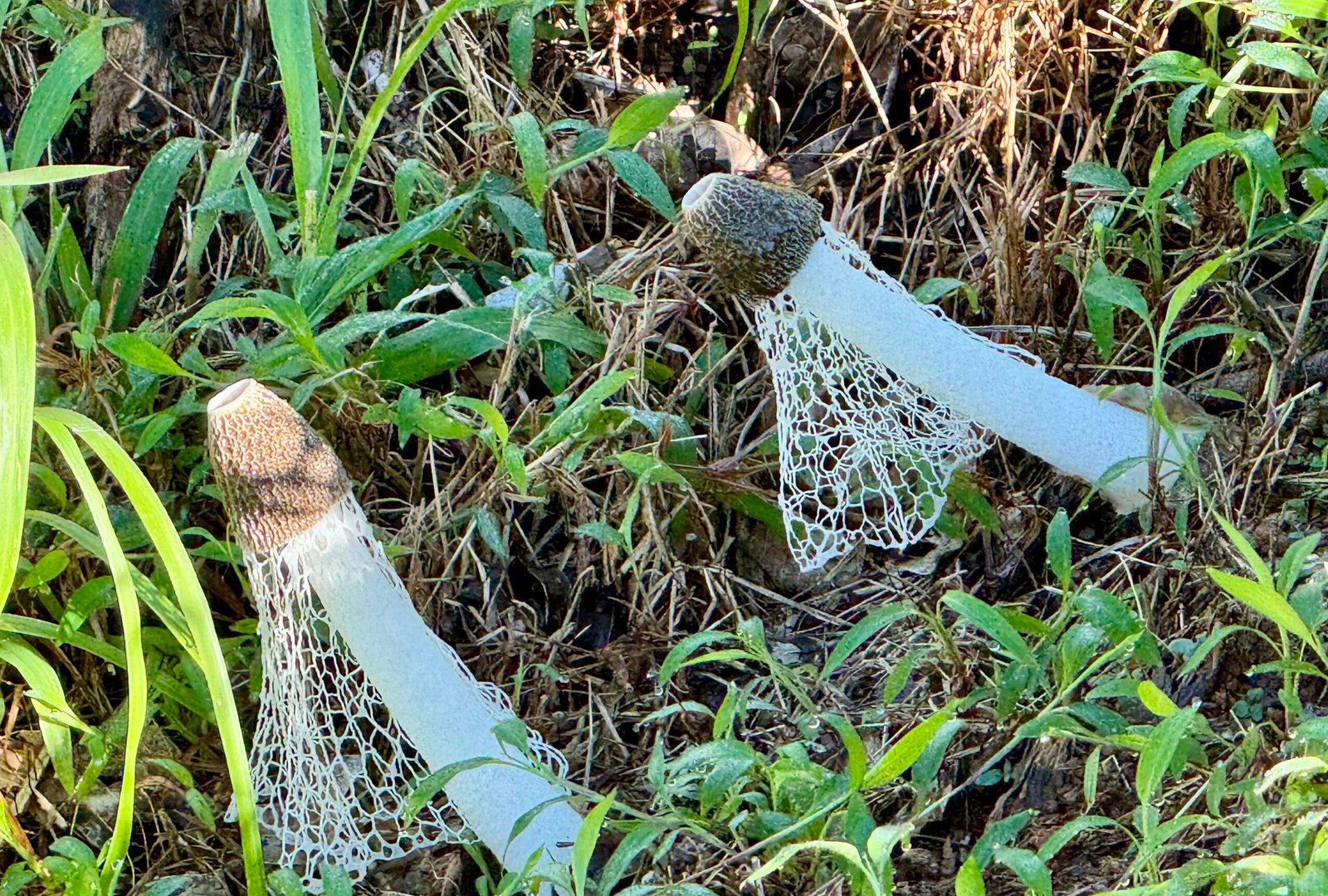
Bridal’s Veil. Stinkhorn. Bamboo Pith. Veiled Lady. Known by many names and found in Costa Ballena all over the world, the Phallus species of mushrooms have a few things in common – their phallic shape, a lack of a broad cap, a spectacular ‘veil’ or ‘indusium’ (most have this), and a rather unpleasant odor reminiscent of dead animal.
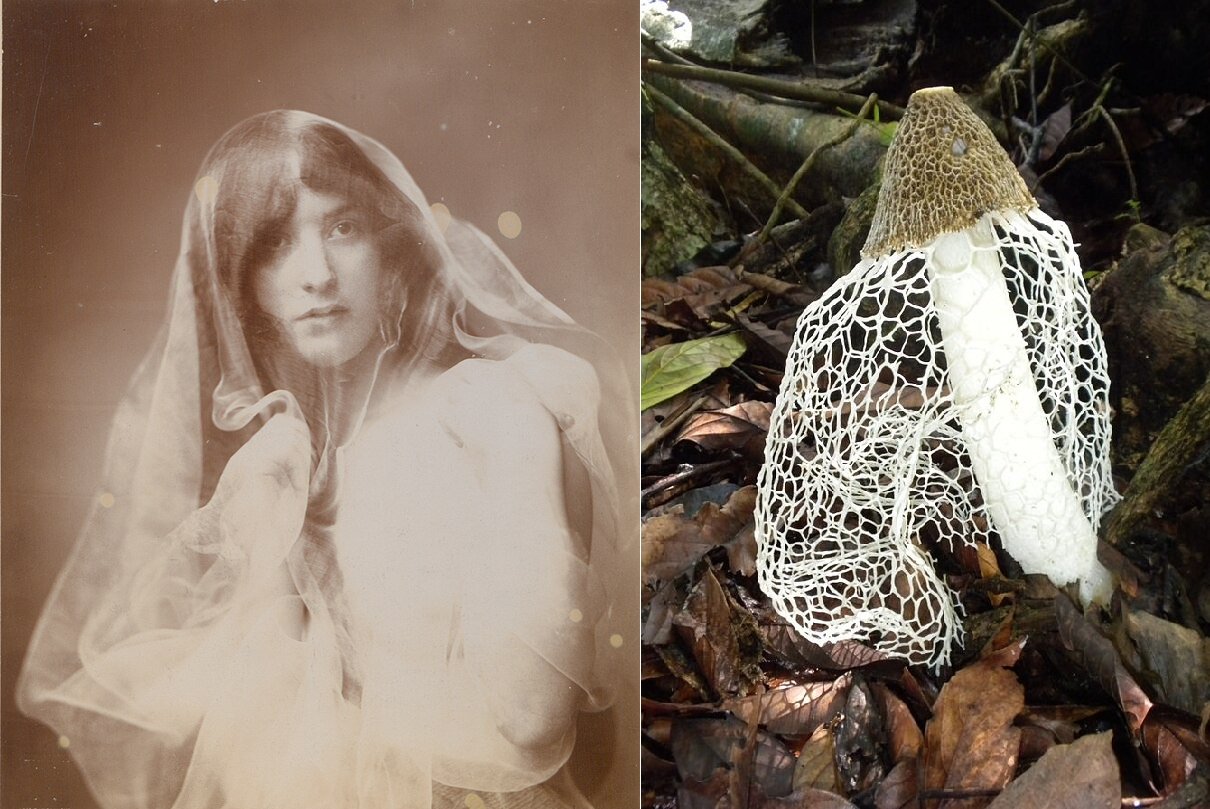
And there is quite a bit of contrast when it comes to their reputation – while the mushrooms are revered in Asia and Europe, they are not as well-known in the Americas, and have an association with death and evil in parts of Africa. A fascinating fungus, let’s explore the Phallus – including several species that are found and gathered in our Costa Rican fields, forests and backyards.
Heather had the surprise of finding a few Phallus mushrooms on her property – the pair has come up in a shady area on top of grass and wood litter – perfect environment for the Stinkhorn. Where there are a few, there will be many more – especially if weather conditions cooperate.
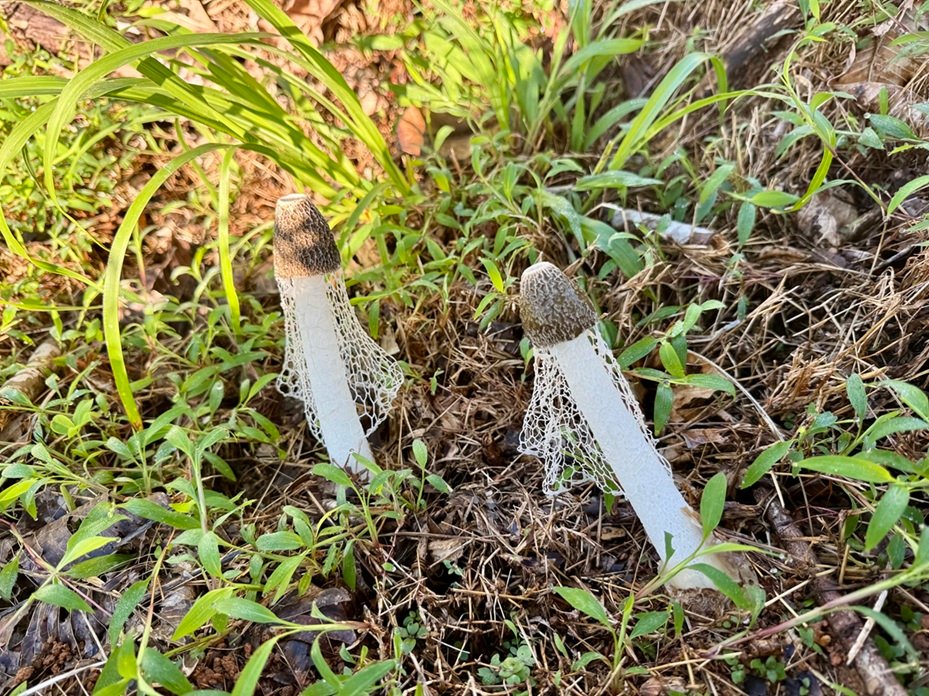
WHAT’S WITH THE STINK???
The Phallus mushrooms carry the nickname ‘Stinkhorns’ due to the strong, carrion-like smell which emits from their caps. This is because the Phallus species do not disperse their spores into the air like other mushrooms. Instead they produce a mass of foul-smelling, goo-covered spores on their cap – this goo is called a gleba. The smell attracts insects such as flies and beetles who then spread the spores around the local area.
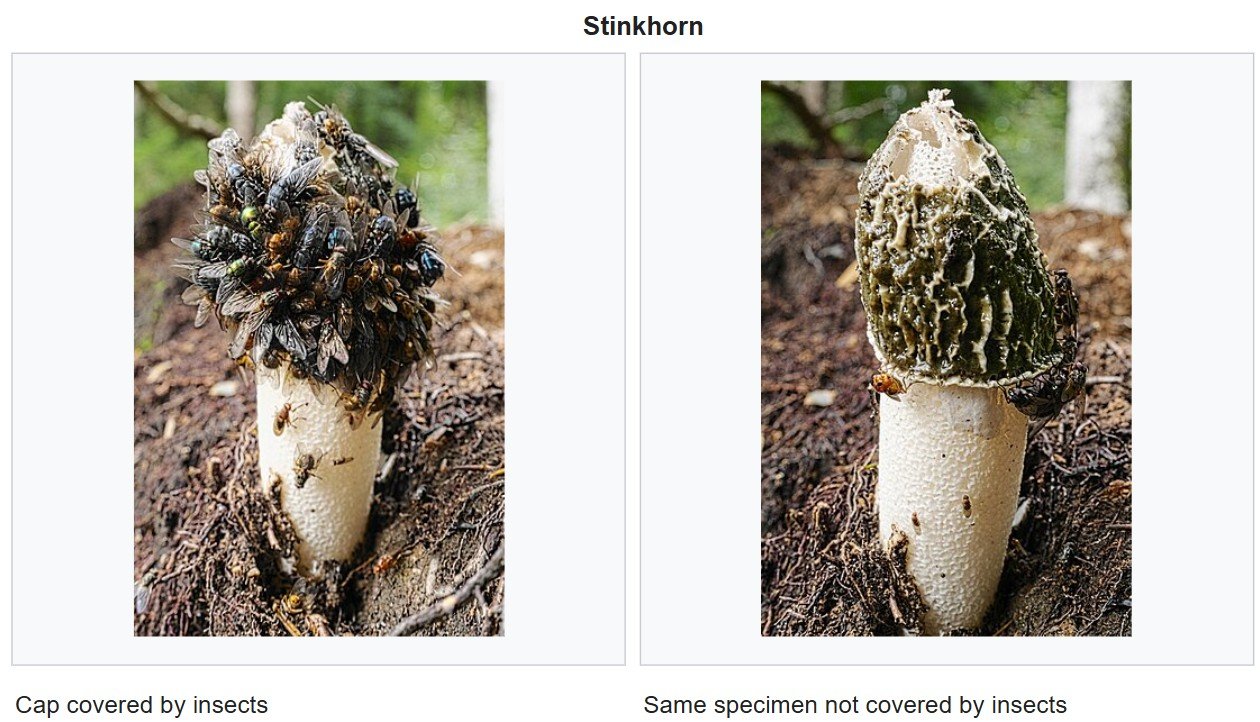
There are reports of mushroom hunters using their finely-tuned sense of smell to hunt for the Stinkhorns!
A BIT ABOUT THE PHALLUS
The main distinguishing feature of most Stinkhorn species is, of course, the beautiful & delicate net or veil-like membrane – called the lattice or indusium. The indusium’s role is to provide a hangout for the flies, beetles and other insects that spread the mushroom’s spores. The bugs pick up the spores from the cap and hang around the mushrooms, spending time on the indusium – and it it here where they leave some spores to be inadvertently collected by other insects that land on or crawl onto the sprawling lattice.
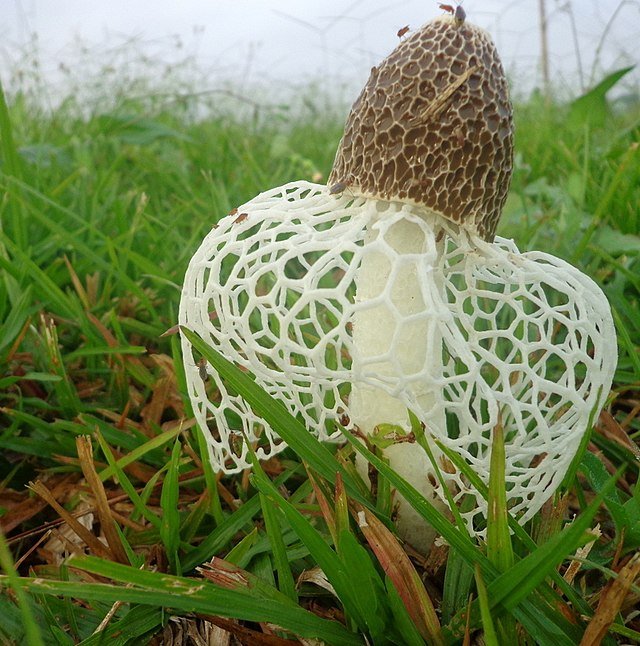
Like mentioned earlier, the dark green to brown gleba is the gelatinous mass of spores which carries a strong carrion-like smell to attract bugs. The insects consume the gleba and pass on the spores via their droppings and contact with legs and other body parts. The gleba is typically found on the top of the mushroom’s cap – and speaking of the cap, in most species it is reticulated with deep ridges that help to hold the gleba in place. Once the gleba is consumed, these reticulations become better visible.
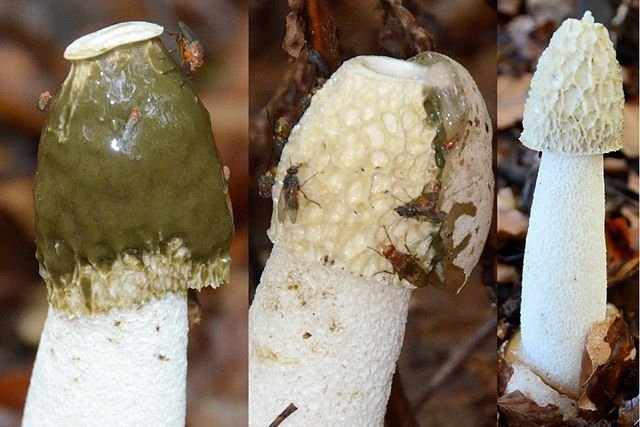
COSTA RICA’S PHALLUS MUSHROOMS
Six Local Species
Several Phallus species are known to grow in Costa Rica – while many others are suspected to occur here. Because their mycelium infects woody matter, the Phallus species have been spread all around the world via wood mulch and wood chip exports. You may be able to spot the following species in our Costa Ballena backyards:
- Phallus duplicatus
- Phallus indusiatus
- Phallus atrovolvatus – this mushroom was ‘discovered’ (or first identified) in Costa Rica
- Phallus impudicus
- Phallus luteus
- Phallus ravenelii
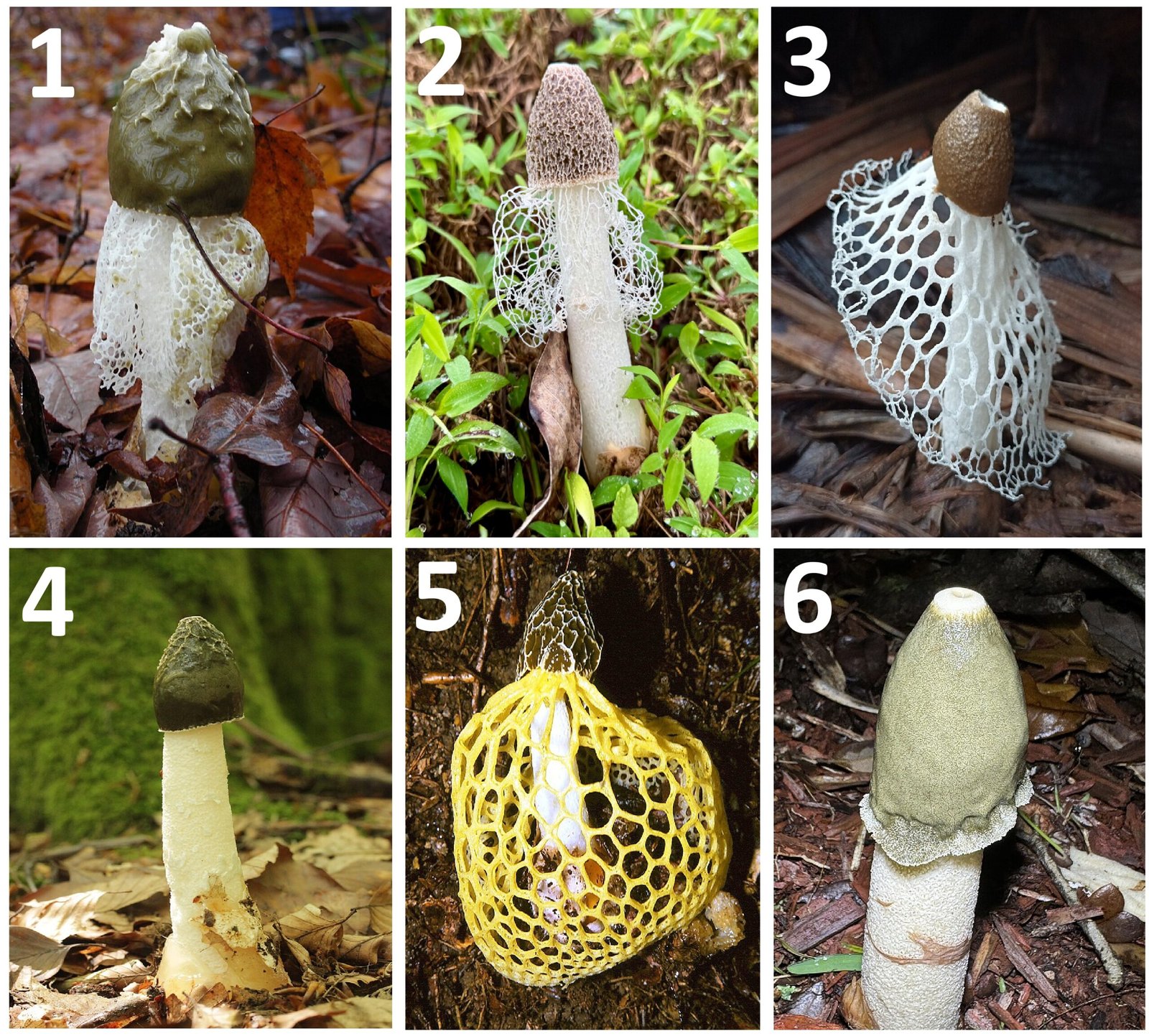
Foraging & Preserving
Right now is the PERFECT time for mushroom foraging. The May – November weather is cool, wet, and much more humid as compared to the dry season. Mushrooms are popping up in our forests, fields and backyards – and can make wonderful additions to stir-fries, roasts, soups, or sauces. You can use them right away or choose to dry or pickle them, which raises their shelf life to months if not years – especially for dried & frozen preparations.
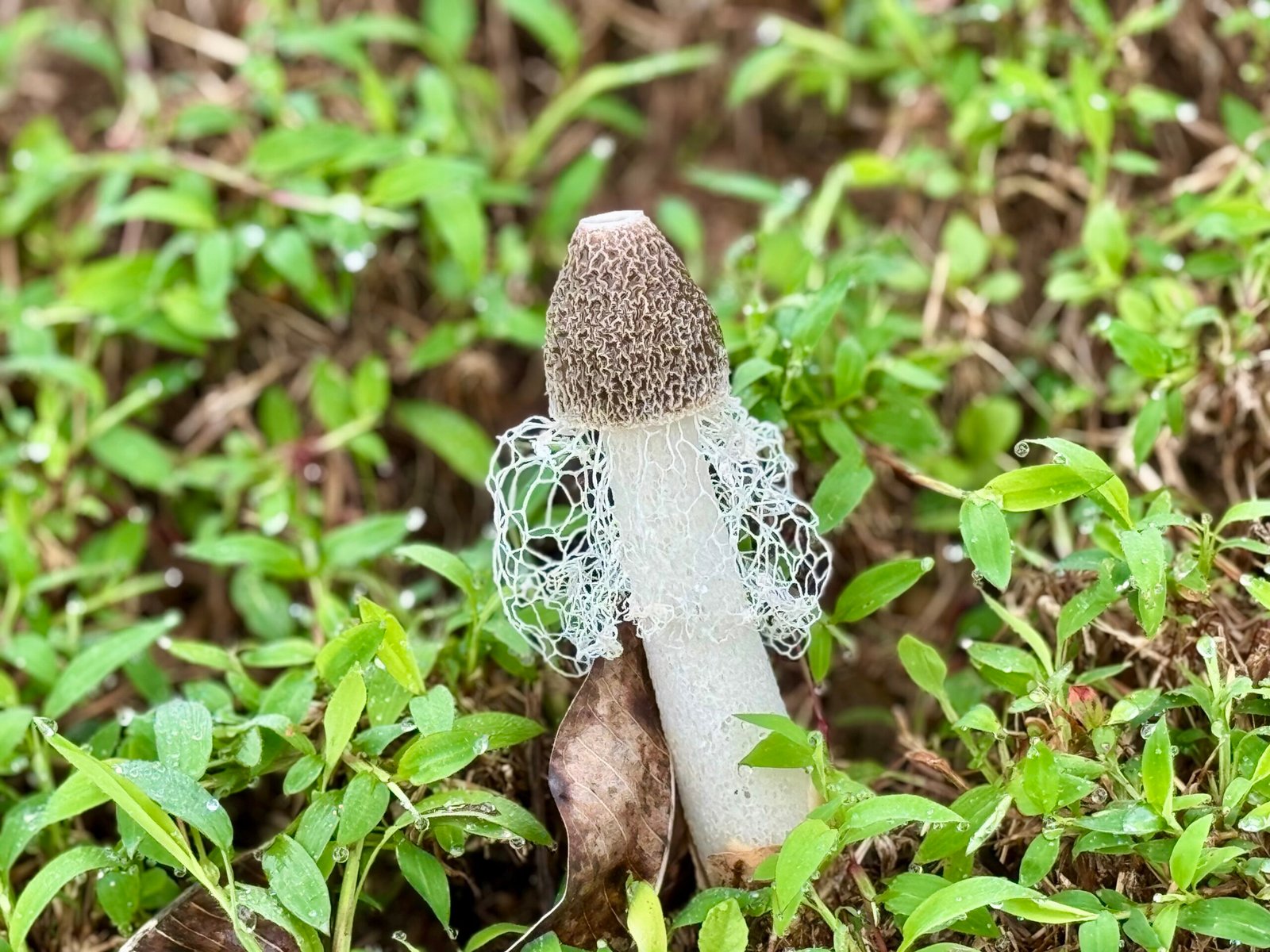
Habitat
Phallus species are saprobic, meaning they feed on dead or decaying organic matter like rotting wood, mulch, and rich organic soil. Woodlands, compost heaps, and areas covered in mulch and woodchips are some of their favorite environments. Like most mushrooms they appear in damp, well-shaded spots where moisture levels remain high.
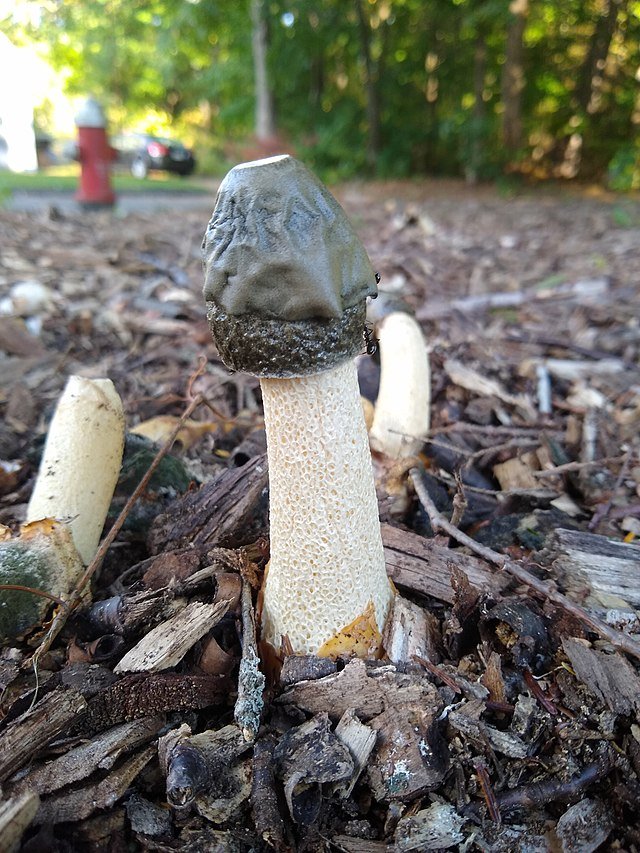
Growth & the famous EGG
The stinkhorn is very fast growing – the celebrated ‘egg’ exists for a fleeting moment. As the photo below illustrates, the mushroom can move from the egg stage into the mature version in under 2 hours. And once above ground, their lives are fickle – just a few days and they are GONE. But not to worry as the visible mushroom is just the fruiting body of the fungus that lives under the ground in the form of thin mycelium threads. Think of the mushroom as you do of an apple – it is a fruit, and just as the apple falls to the ground and rots, the mushroom withers away. The photo below shows the Phallus luteus specie which is present in Costa Rica – you’ve gotta be fast!
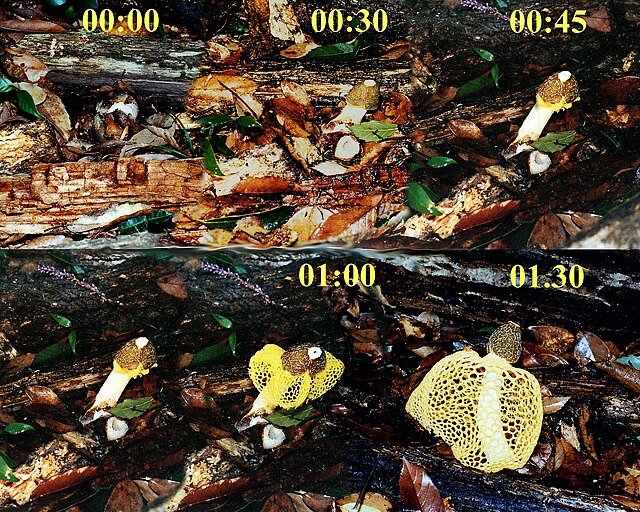
CULINARY USES
Delicacy
In many areas of the world, Stinkhorns are picked when they are in the ‘egg’ stage – this is when the whole fruiting body, or mushroom, is contained within a tiny ‘ball’ that is still partly buried in the ground and litter. This ‘ball’, also called the Witch’s Egg is later pumped full of water as it expands into the mature mushroom shape. But the mushroom is most delicious in the ‘egg’ form. At this stage, pieces of the inner layer can be cut out with a knife and eaten raw. They are said to be crisp and crunchy, with an attractive flavor reminiscent of radishes.
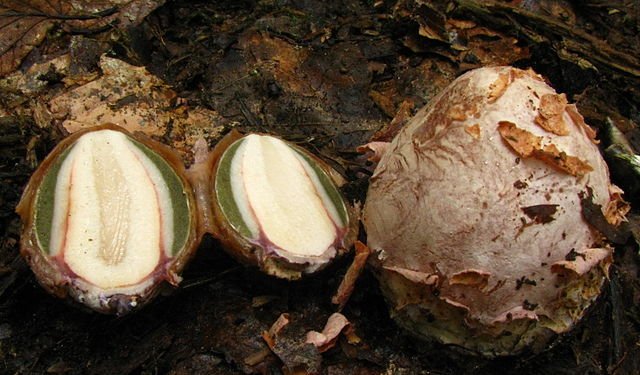
Common Use & Prices
In some parts, fully matured fruiting bodies are foraged – because many Phallus species do not take well to being farmed, most are picked wild. This is also the reason they are somewhat expensive and considered to be an item of luxury, or at least special occasion. One specie of Phallus, however, has been successfully farmed – which has made it much more accessible. The Hong Kong price for a kilogram of dried Phallus indusiatus reached around US $770 in 1982 ($2,500 in today’s dollars) but had dropped to US $100–200 by 1988. Additional farming advances led to it dropping further to US $10–20 by 2000, where it remains to this day.
China
In China, the mushrooms are a revered part of the haute (high-quality) cuisine – being used in exclusive, high-end stir fries and soups. Similar uses are found in Thailand, Japan, and many other Asian countries.
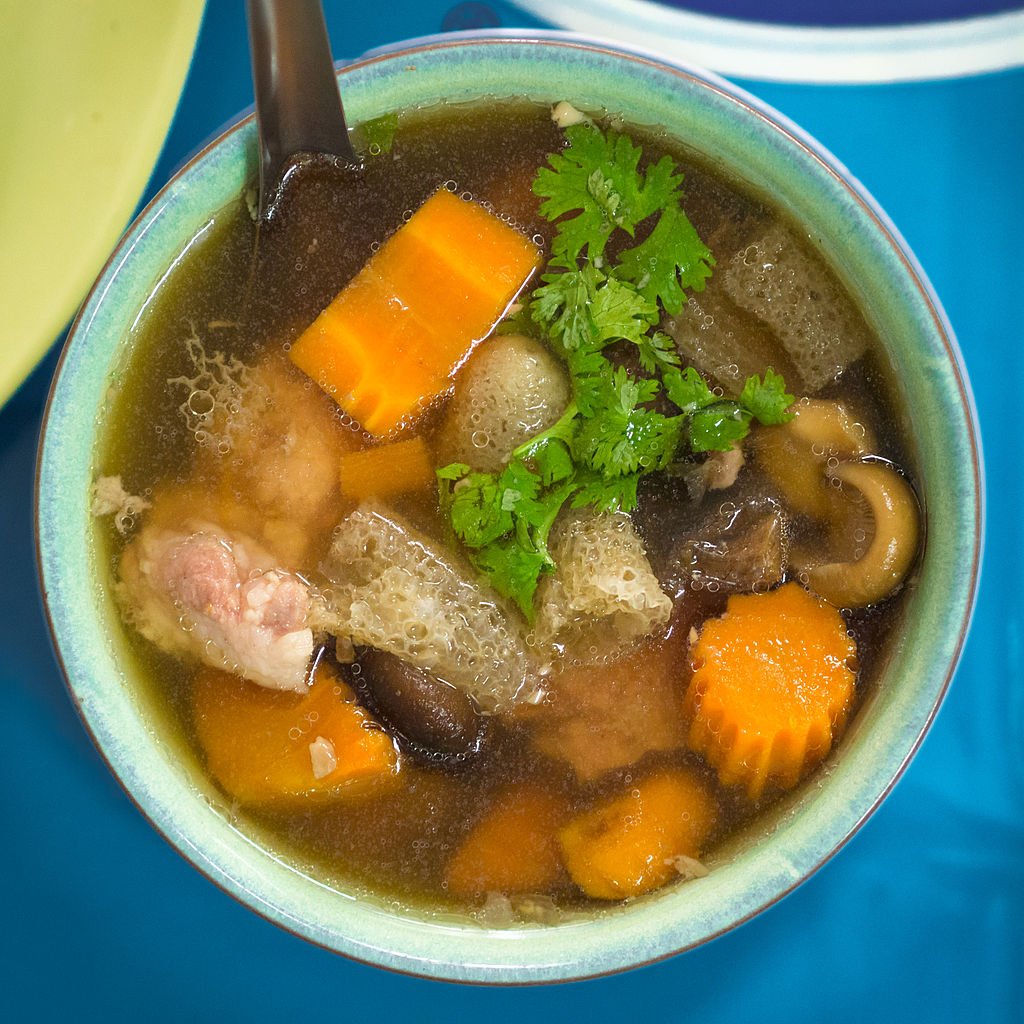
Europe
Europeans prefer the ‘egg’ stage of the Sitnkhorn – the outside egg layers are eaten raw (a local delicacy), processed into sausages, or pickled for later use. Mature Phallus are generally avoided except for the stalks which are sometimes used in stews. And all around the world, wild mushroom aficionados take great pleasure in hunting and foraging for this beautiful & unique fungus – putting the small aside, of course.
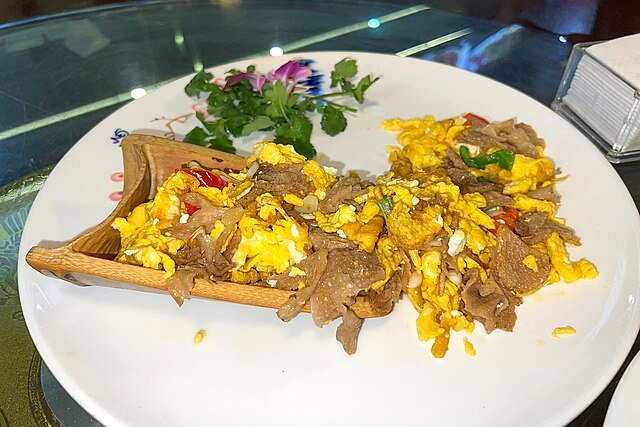
Stinkhorns are nutritious and uncharacteristically high in protein as well as high in fiber & carbs. The mushroom also contains various bioactive compounds, elevated antioxidants and hold antimicrobial properties.
MEDICINAL PRPPERTIES & FOLKLORE
- During the Victorian era, stinkhorns were considered very indecent. People would destroy them to prevent young women from seeing them.
- In Northern Montenegro, peasants were known to rub Phallus mushrooms on the necks of bulls before bull fighting contests. This was done in an attempt to make them stronger. They are also fed to young bulls as they are thought to be a potent aphrodisiac.
- Phallus was consumed in Mexican divinatory ceremonies on account of its suggestive shape.
- New Guinea natives consider the mushroom sacred.
- The Yoruba (Nigeria) have been reported to have used it as a component of a charm. The charm would make hunters less visible in times of danger.
- The people of Thuringia (Germany) called the unopened stinkhorns “ghost’s or daemon’s eggs”. They dried and powdered them before mixing them in spirits as an aphrodisiac.
- In some African cultures, their presence near a home might be interpreted as a sign of impending death or illness within the family.
- Stinkhorns have been used in the preparation of harmful charms by ethnic groups such as the Urhobo and the Ibibio people of Nigeria.
- Stinkhorn was used to treat many inflammatory, stomach, and neural diseases in China. Southern China’s Miao people continue to use it traditionally for a number of afflictions.
- The Stinkhorn has long been recognized to have antibacterial properties: the addition of the mushroom to soup broth was known to prevent it from spoiling for several days. One of the responsible antibiotics, albaflavenone, was isolated in 2011.
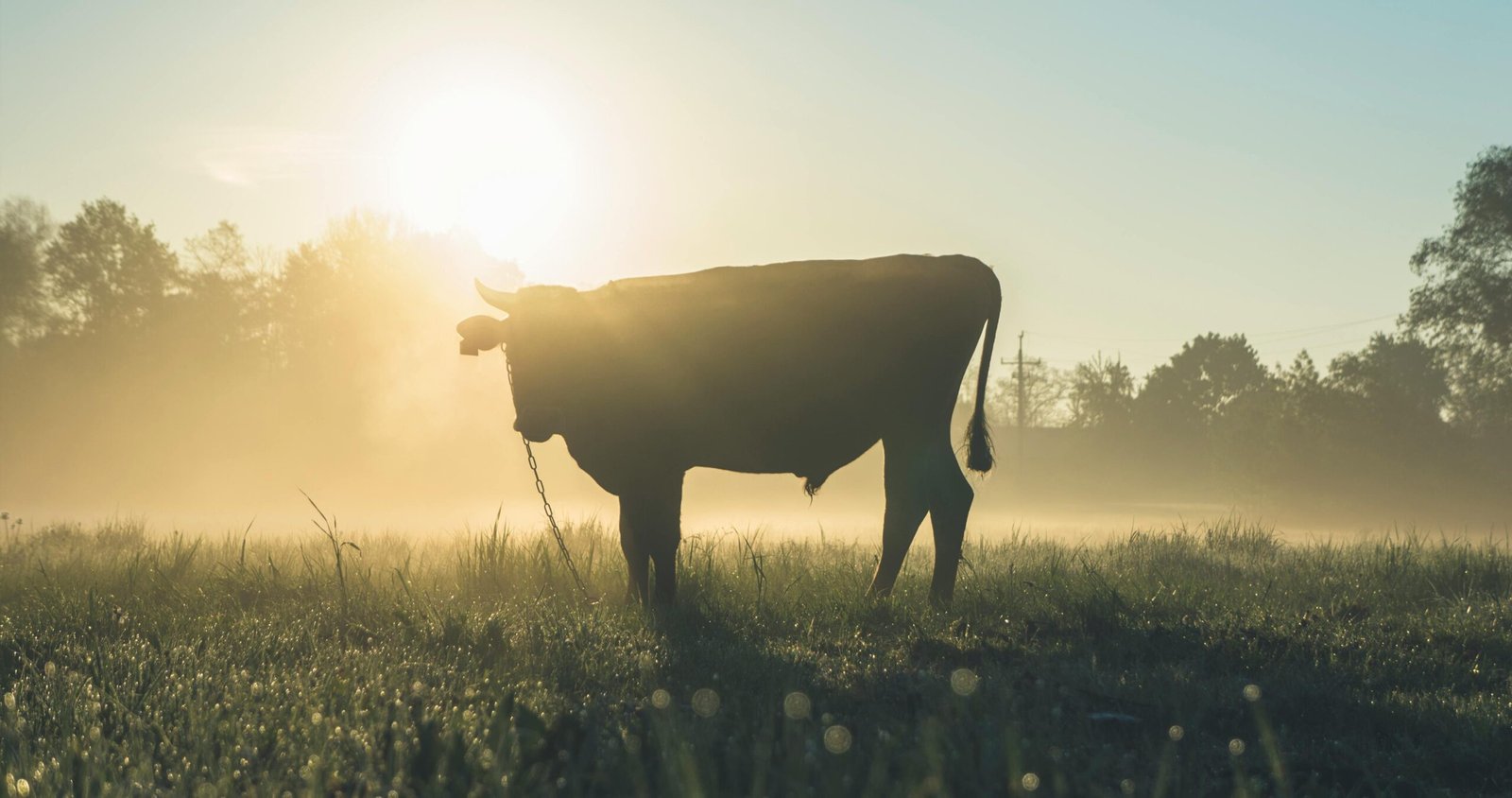
STINKHORN-BADGER ASSOCIATION?
Stinkhorns & Badger Dens
There is a suspected symbiosis between the Badger and a specie of Phallus mushroom – one that is also present in Costa Rica. It has been noticed that, often, the Phallus mushrooms fruit within 25-40 meters of a Badger den.
Stinkhorns & Badger Pups
Badgers are known for having a very high pup mortality rate. It goes like this: the Phallus mushroom attracts carrion-eating flies, four very specific species. These species feed on both carrion and the mushroom’s spore goo. These specific flies then make their way to the Badger dens to feed on the bodies of the pups. The mushrooms thus create an environment where high numbers of beneficial flies abound, with these flies multiplying inside the Badger pup bodies as well, increasing the population of the insects – and ensuring the guaranteed dispersal of the mushroom spores.
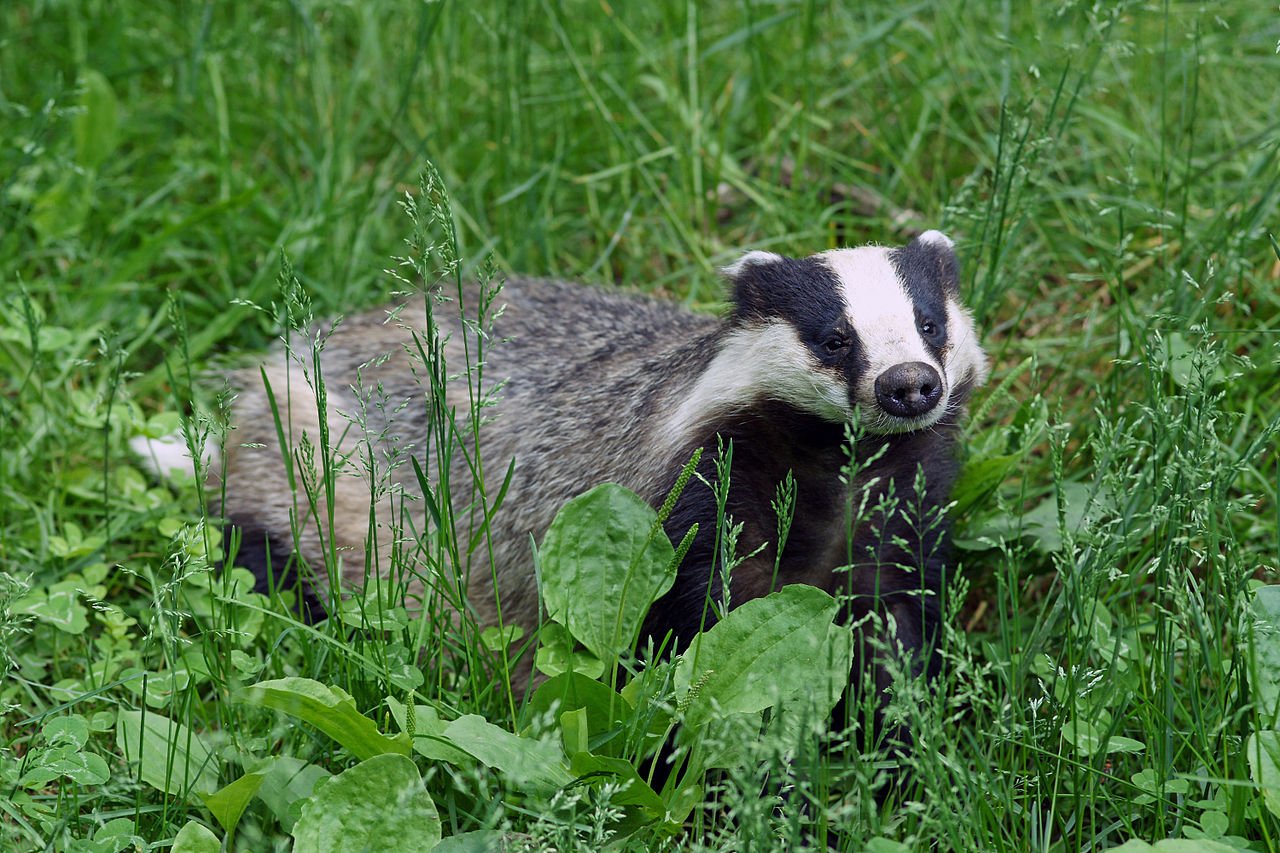
The GOO Holds the Secret
So, in effect, the mushrooms are ‘farming’ the flies. And the kicker? The goo which holds the Phallus spores also contains a laxative which ensures the flies release the spores within the local area. An area that the mushrooms are already colonizing as it contains adequate food & environmental conditions. Done!
Pizotes?
Are there Badgers in Costa Rica? Well, the North American Badger does not live south of Mexico but our Tayras or Pizotes are very Badger-like animals.
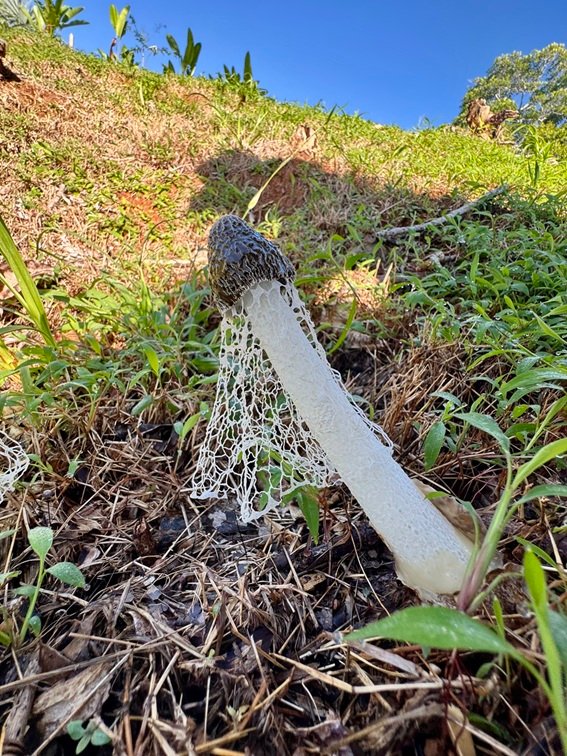
One of mother nature’s more striking, interesting and intricate creations, the Phallus is an amazing fungus. Not only does it trick flies & insects, it has also developed a ‘hangout area’ for them to congregate in. And, at least as a theory, has evolved a relationship with a mammal. AND they have a great taste & presentation is meals and soups, plus purported folk medicine properties.
Our tropical area boasts untold variety of strange, exotic, and tasty bounty – a visit to a local food stall will leave you speechless! Imagine living in a beautiful, tropical land where each day brings an explosion of new tastes and wonder – you can make this dream a reality much quicker than you think! Take the first step by browsing our local property listings here. RE/MAX WE SELL PARADISE is your trusted partner in this land of exotic and tropical culinary delights – we are waiting for your call!
!!! A WORD OF WARNING !!!
This article is not to be taken as any sort of a mushroom guide – it definitely is not. If you decide to take a chance by picking wild mushrooms, take the utmost care. Ensure that you are 100% sure of what you are picking. It is best to learn this craft under the guidance of an experienced mushroom picker. Some species of deadly mushrooms can be (and often are) very easily confused with harmless, edible ones. Also take care when purchasing wild mushrooms at food stalls & markets. It is also wise to scrutinize restaurants that include wild mushrooms in their meals.


